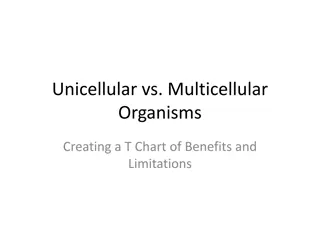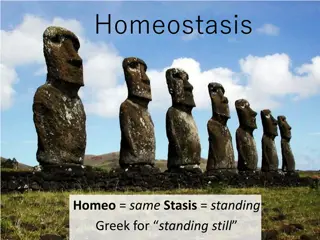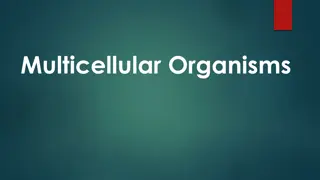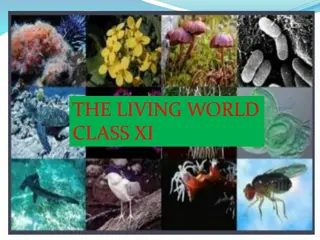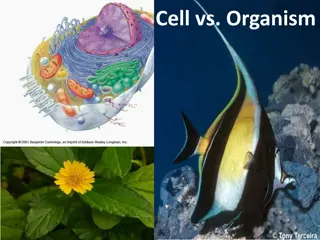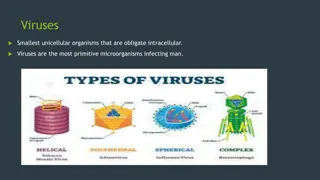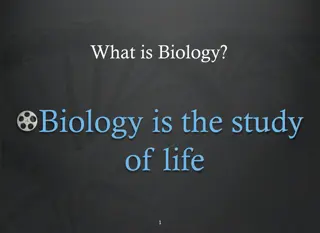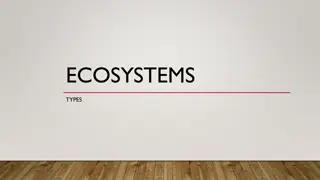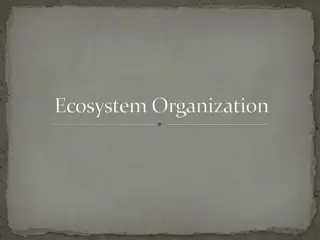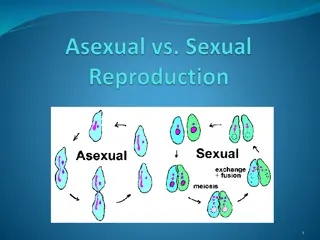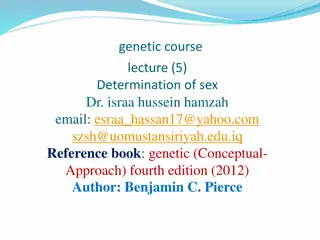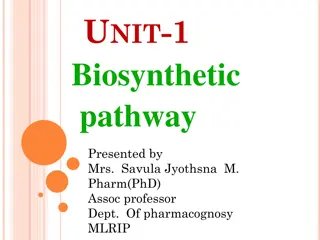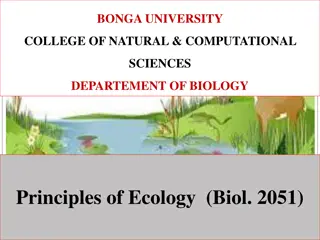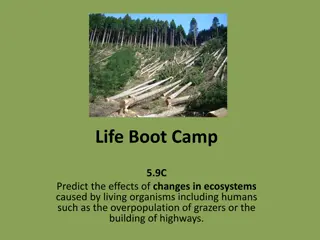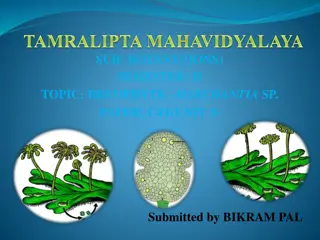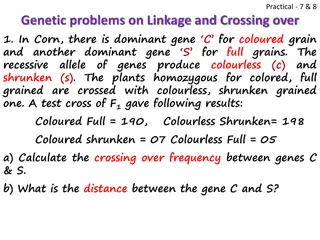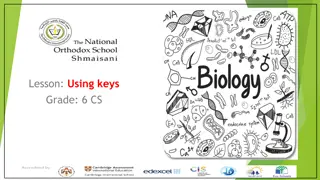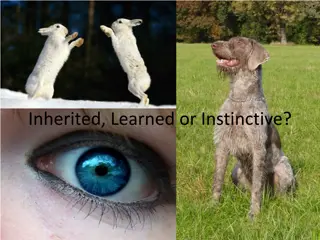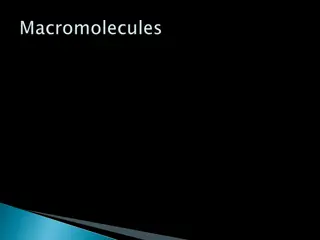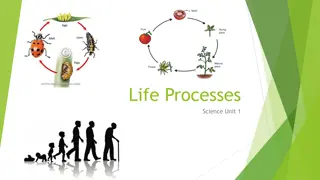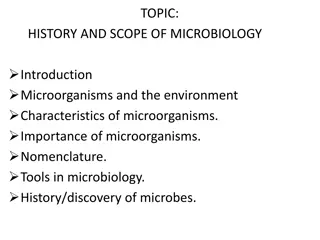Exploring Unicellular Organisms: Amoeba and Euglena Structures and Characteristics
Journey into the microscopic world of unicellular organisms with a focus on Amoeba and Euglena. Discover the unique structures and behaviors of these tiny creatures, from Amoeba's adaptable pseudopod movements to Euglena's photosynthesis capabilities. Uncover how these organisms survive, feed, and reproduce in their environments through binary fission. Dive into the intricacies of their cellular structures and functions to deepen your understanding of the diversity of life on Earth.
Download Presentation

Please find below an Image/Link to download the presentation.
The content on the website is provided AS IS for your information and personal use only. It may not be sold, licensed, or shared on other websites without obtaining consent from the author. Download presentation by click this link. If you encounter any issues during the download, it is possible that the publisher has removed the file from their server.
E N D
Presentation Transcript
80/20 THINK! What do you NEED to cover with your set Grade Learning Objective Learning Outcome Recall what a unicellular organism is 1 Describe the difference between unicellular and multicellular organisms 2 Describe the structure of an amoeba Describe the structure of a euglena 3
Unicellular Organisms Do now activity: What is the smallest organism that you can think of, which lives in our environment?
Progress indicators GOOD PROGRESS: Recall what a unicellular organism is Describe the structure of an amoeba OUTSTANDING PROGRESS: Describe the structure of a euglena
Amoeba and euglena are both types of unicellular organism http://www.youtube.com/watch?v=7pR7TNzJ_pA
Unicellular Organisms Task 1: Draw and label a diagram of both an amoeba and euglena. Task 2: Describe the diet of each organism and explain how both the amoeba and euglena reproduce. Use the information on Slide 6 and 7 to complete the task on slide 8
Amoeba An amoeba is a unicellular organism that has no fixed shape, they can move by changing the shape of their body. Pseudopod Cell membrane Nucleus Contractile Vacuole Food Vacuole Amoebas look a bit like a blob of jelly, they can be found in fresh water, wet soil and even inside animals. They eat algae, bacteria and plant cells. They can engulf food by surrounding the tiny particles of food with their cytoplasm, then forming a food vacuole. Chemicals in the food vacuole digest the food. They reproduce by a process called binary fission this means the amoeba cell splits itself into two by firstly the nucleus dividing, then the cytoplasm producing two identical daughter cells.
Euglena An euglena is a unicellular organism that is found in freshwater. Eye spot Flagellum Chloroplast Nucleus Contractile Vacuole Euglenas are similar to amoeba in that they contain cytoplasm and a nucleus, but they also have chloroplasts, which make them look green. The chloroplasts trap energy transferred from the Sun so that the euglenas can make food by photosynthesis. They have an eye spot which detects light, also a flagellum to help them swim towards the light. If euglena is unable to utilize light to produce food it will eat other small microorganisms, such as bacteria and algae. Euglenas also reproduce by binary fission, the same as ameobas.
Self-assessment: Amoebas eat algae, bacteria and plant cells. They can engulf food by surrounding the tiny particles of food with their cytoplasm, then forming a food vacuole. Chemicals in the food vacuole digest the food. They reproduce by a process called binary fission this means the amoeba cell splits itself into two by firstly the nucleus dividing, then the cytoplasm producing two identical daughter cells. If euglena is unable to utilize light to produce food it will eat other small microorganisms, such as bacteria and algae. Euglenas also reproduce by binary fission, the same as amoeba s.
Task: Copy and complete the sentences using the following key words: Binary fission one unicellular engulf photosynthesis Amoebas and euglenas are examples of __________ organisms. This means that they are only made up of ______ cell. Both organisms reproduce by _________ ______. Amoebas have to _________ food to survive but euglenas can carry out _________ to produce their own food.
Self-assessment: Amoebas and euglenas are examples of unicellular organisms. This means that they are only made up of one cell. Both organisms reproduce by binary fission. Amoebas have to engulf food to survive but euglenas can carry out photosynthesis to produce their own food.
Key Word Bingo!! 1. Choose 6 of the following words/terms and write them into your books: 1. Diffusion 2. Microscope 3. Nucleus 4. Red blood cell 5. Root hair cells 6. Cell membrane 7. Stage 8. Sperm cell 9. Concentration 10. Euglena 2. I am going to read a definition, if it matches one of the words/terms you have written down then cross it out. 3. The first person to cross all 6 of their words out, shout BINGO!!!
3-3-1 Reduction 3 facts 3 key words 1 key words
Resources Resources


